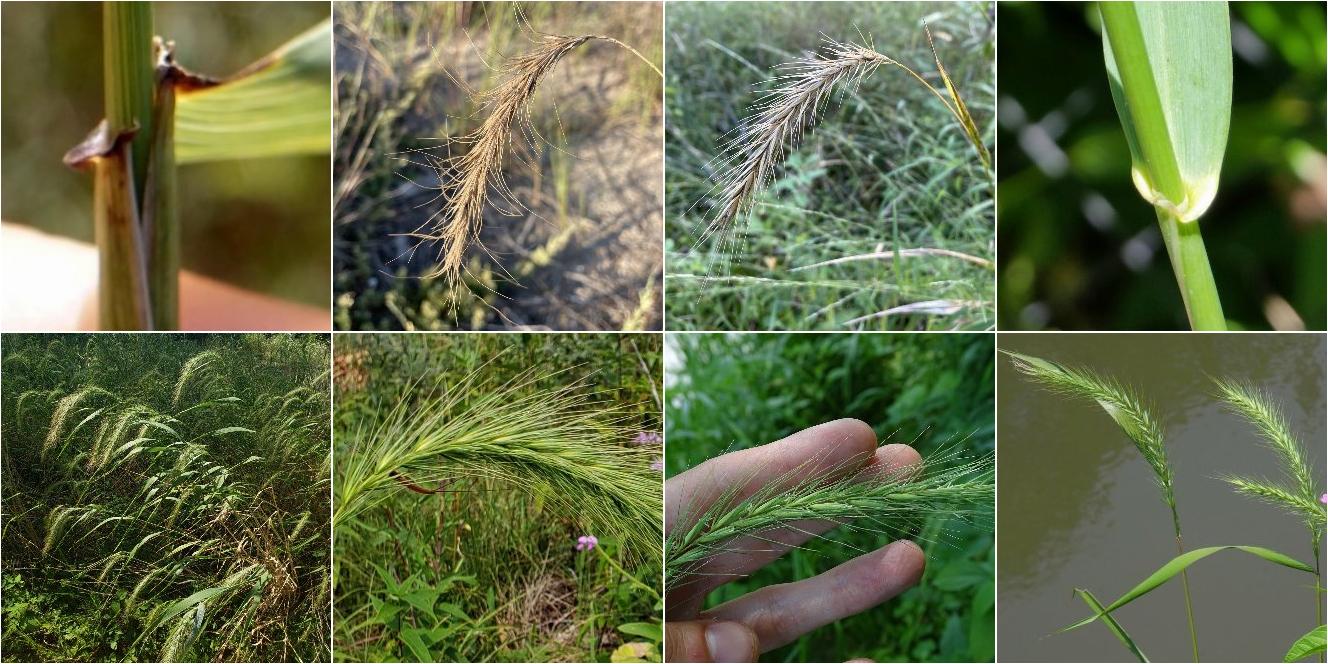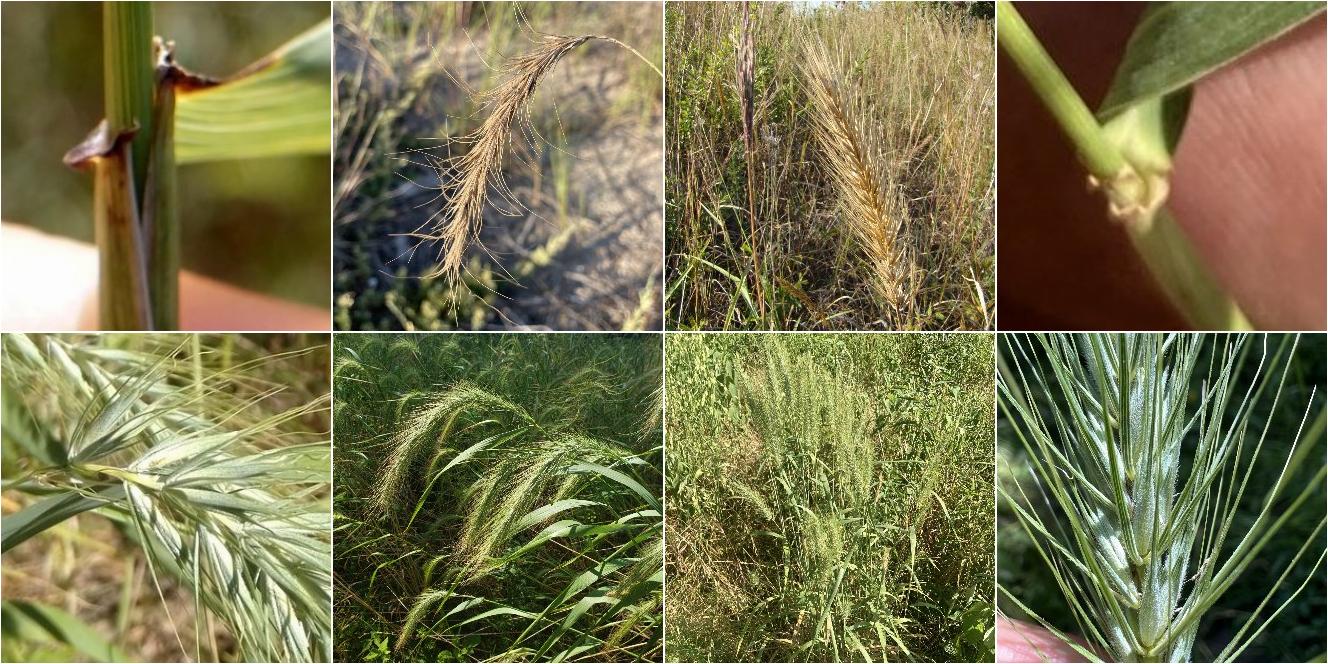Canada Wildrye (Elymus canadensis) vs. Riverbank Wildrye (Elymus riparius)
Updated February 13th, 2023These two species are easily confused, especially early in the season before spikes dry out. Both can be glaucous and both have long, drooping spikes. They are readily distinguished by whether or not the awns curl later in the season. E. riparius is more restricted to moist, usually riparian habitats, tolerates greater shade, and ranges farther south in the east of its range. E. canadensis prefers sunnier and more disturbed habitats, can occur in drier habitats, and ranges much farther west.





